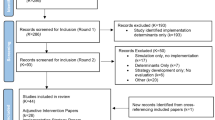Abstract
The TransLife Care (TLC) project was developed to address the structural factors that act as barriers to HIV care among transgender women of color. The purpose of this study was to evaluate the feasibility and initial efficacy of the TLC project; primary HIV care outcomes included linkage to HIV care, engagement in care, retention in care, use of ART and viral suppression among N = 120 participants. In multivariable analysis, receipt of the intervention (versus none), was associated with any HIV care visit (aOR 2.05; 95% CI 1.25–3.37; p = 0.005), more total HIV care visits (aRR 1.45; 95% CI 1.09–1.94; p = 0.011), being retained in care (aOR 1.58; 95% CI 1.03–2.44; p = 0.038), and having a viral load test done (aOR 1.95; 95% CI 1.23–3.09; p = 0.004). We conclude that a structural intervention, designed and delivered by the focus population, that directly addresses social determinants, is feasible and efficacious to promote HIV care engagement among transgender women of color.
Resumen
El proyecto TransLife Care (TLC) se desarrolló para abordar los factores estructurales que actúan como barreras para la atención médica del VIH entre las mujeres transgénero de color. El propósito de este estudio fue evaluar la viabilidad y la eficacia inicial del proyecto TLC; los resultados primarios de la atención médica del VIH incluyeron el vínculo con la atención médica del VIH, la retención en la atención médica, el uso de ART y la supresión viral entre N = 120 participantes. En el análisis multivariable, la recepción de la intervención (versus ninguna) se asoció con la participación en la atención médica (aOR 2.05, IC 95% 1.25–3.37, p = 0.005), más visitas totales al VIH (aRR 1.45, IC 95% 1.09–1.94, p = 0.011), se mantuvo en la atención médica (aOR 1.58; IC 95%: 1.03 - 2.44; p = 0.038) y se realizó una prueba de carga viral (aOR 1.95; IC 95%: 1.23 - 3.09; p = 0.004). Concluimos que una intervención estructural, diseñada y ejecutada por la población de enfoque, que aborda directamente los determinantes sociales, es factible y eficaz para promover el compromiso de la atención del VIH entre las mujeres transgénero de color.
Similar content being viewed by others
References
Baral SD, Poteat T, Stromdahl S, Wirtz AL, Guadamuz TE, Beyrer C. Worldwide burden of HIV in transgender women: a systematic review and meta-analysis. Lancet Infect Dis. 2013;13(3):214–22.
Clark H, Babu AS, Wiewel EW, Opoku J, Crepaz N. Diagnosed HIV infection in transgender adults and adolescents: results from the National HIV Surveillance System, 2009-2014. AIDS Behav. 2017;21(9):2774–83.
Centers for Disease Control and Prevention (CDC). Establishing a holistic framework to reduce inequities in HIV, viral hepatitis, STDs, and tuberculosis in the United States. Atlanta: U.S. Department of Health and Human Services, Centers for Disease Control and Prevention; 2010.
Beltran VM, Harrison KM, Hall HI, Dean HD. Collection of social determinant of health measures in U.S. national surveillance systems for HIV, viral hepatitis, STDs, and TB. Public Health Rep. 2011;126(Suppl 3):41–53.
Sharpe TT, Harrison KM, Dean HD. Summary of CDC consultation to address social determinants of health for prevention of disparities in HIV/AIDS, viral hepatitis, sexually transmitted diseases, and tuberculosis. Public Health Rep. 2010;125(Suppl 4):11–5.
Garofalo R, Osmer E, Sullivan C, Doll M, Harper G. Environmental, psychosocial, and individual correlates of HIV risk in ethnic minority male-to-female transgender youth. J HIV/AIDS Prev Child Youth. 2006;7(2):89–104.
Garofalo R, Deleon J, Osmer E, Doll M, Harper G. Overlooked, misunderstood and at-risk: exploring the lives and HIV risk of ethnic minority male-to-female transgender youth. J Adolesc Health. 2006;38:230–6.
Grossman AH, D’Augelli AR. Transgender youth: invisible and vulnerable. J Homosex. 2006;51(1):111–28.
Pardo ST, Schantz K. Growing up transgender: Safety and resilience, part 2. Ithaca: ACT for Youth Center of Excellence, Cornell University; 2008.
Koken J, Bimbi DS, Parsons JT. Experiences of familial acceptance–rejection among transwomen of color. J Fam Psychol. 2009;23(6):853–60.
Lombardi E, Wilchins R, Priesing D, Malour D. Gender violence: transgender experience with violence and discrimination. J Homosex. 2001;42:89–101.
Wilson EC, Garofalo R, Harris DR, Belzer M. Sexual risk taking among transgender male-to-female youths with different partner types. Am J Public Health. 2010;100(8):1500–5.
Remien RH, Bauman LJ, Mantell JE, Tsoi B, Lopez-Rios J, Chhabra R, et al. Barriers and facilitators to engagement of vulnerable populations in HIV primary care in New York City. J Acquir Immune Defic Syndr. 1999;2015(69 Suppl 1):S16–24.
The White House Office of National AIDS Policy. National HIV/AIDS strategy for the United States: Updated to 2020. Washington, DC: White House; 2015.
Ashman JJ, Conviser R, Pounds MB. Associations between HIV-positive individuals’ receipt of ancillary services and medical care receipt and retention. AIDS Care. 2002;14(Suppl 1):S109–18.
U.S. Department of Health and Human Services. Enhancing engagement and retention in quality HIV care for transgender women of color—demonstration sites (HRSA-12-099). Rockville: Health Resources & Services Administration; 2012.
Kuhns LM, Wade B, Perloff J, Rebchook G, Keatley J, Garofalo R. Interim evaluation of an educational intervention to promote transgender-specific competence among medical and social service providers. Oakland, CA: National Transgender Health Summit; April 17–18, 2015.
Acknowledgements
We thank members of the TLC Team for their contribution to sample accrual and data collection. Thanks also to our community health partner, Heartland Alliance Health. Research reported in this publication was supported by Award Number H97HA24965 from the HRSA to Chicago House and Social Service Agency. The content is solely the responsibility of the authors and does not necessarily represent the official views of HRSA.
Author information
Authors and Affiliations
Corresponding author
Ethics declarations
Conflict of interest
No financial disclosures were reported by the authors of this paper.
Additional information
Publisher's Note
Springer Nature remains neutral with regard to jurisdictional claims in published maps and institutional affiliations.
Rights and permissions
About this article
Cite this article
Kuhns, L.M., Hotton, A.L., Perloff, J. et al. Evaluation of Translife Care: An Intervention to Address Social Determinants of Engagement in HIV Care Among Transgender Women of Color. AIDS Behav 25 (Suppl 1), 13–19 (2021). https://doi.org/10.1007/s10461-019-02548-y
Published:
Issue Date:
DOI: https://doi.org/10.1007/s10461-019-02548-y




